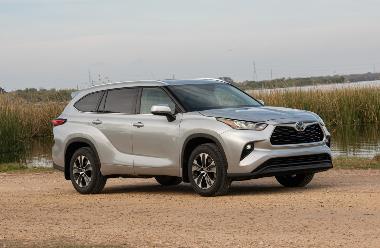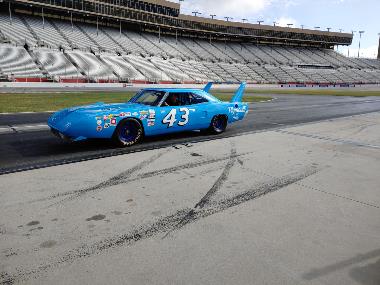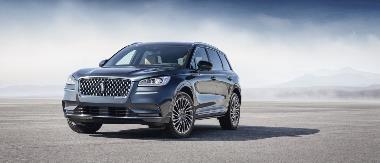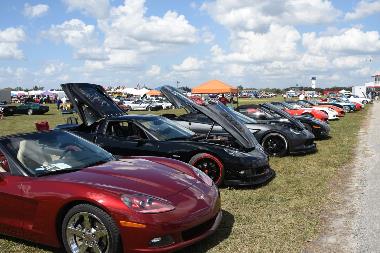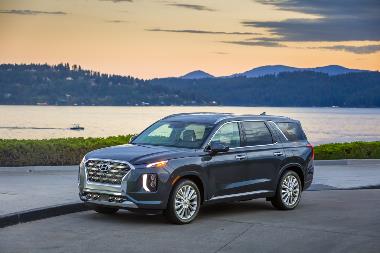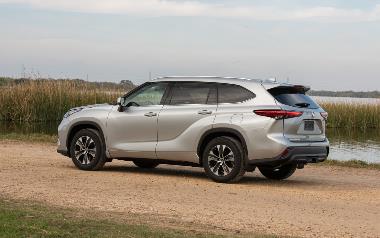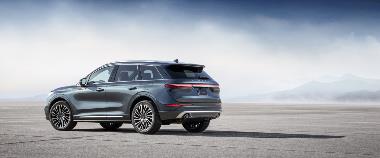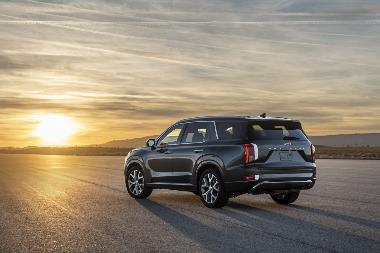There’s a new SUV flagship in the Hyundai fleet, as the all-new Hyundai Palisade enters the line-up, replacing the Santa Fe XL. Created as a roomy three-row midsize sports-ute with premium appointments and a quality ride, the 2020 Hyundai Palisade offers luxury, high-tech, infotainment and safety with bold styling.
Mike O’Brien, vice president of Product, Corporate and Digital Planning, Hyundai Motor America said, “The new 2020 Hyundai Palisade clearly evokes design imagery worthy of Hyundai’s flagship SUV, with new levels of all-road, all-weather capability, technology, safety, roominess and efficiency, all packaged in cutting-edge design. (It) is the ultimate family vehicle for practical, comfortable daily use and memory-making road trips whenever the appeal of the open road should beckon.”
Palisade comes to market with seating for up to eight and vast cargo space with convenient features including power third-row seats and One-Touch second-row seats for ease of use. All Palisade trims offer a host of safety and tech accouterments, and my test Palisade in Limited trim, was loaded with 7-passenger seating, dual sunroof, 12.3-inch fully digital instrument cluster, Heads-Up Display, Premium Nappa Leather seating, Lane Keeping Assist, Blind-Spot-Collision avoidance, 8-way power driver seat and heated front seats, and front and rear dual automatic climate control.
Additionally, the trim came standard with the Convenience Package -- 20-inch alloy wheel, auto-leveling rear suspension, LED taillights, front parking sensors, hands-free liftgate with Auto open, 7-inch high-res cluster display, Ultrasonic rear occupant alert, rear side window sunshade, wireless device charging for Qi-supported devices third-row USB outlets and more. Additionally, the trim level came from the factory with the Premium Package installed – Bi-LED headlights, leather seating surfaces, 8-way power passenger seats, integrated memory system for driver seat, heated second-row seats, third-row power seating, heated steering wheel, premium dashboard and premium door armrests.
Palisade’s styling is confident and bold, with a cascading grille, separated composite headlamps and a vertically-connected forward lighting signature. Muscular from front to rear, a powerful, extended hood profile creates an impressive road presence, while bold C-pillars and a panoramic glass side graphic convey generous third-row spaciousness, and panoramic rear glass coupled with a cutaway roof provides a generous sense of spaciousness to rear passengers. With a curbweight of 4284 lbs., Palisade measures 196.1 inches long, 77.8 inches wide and 68.9 inches high on a 11.4-inch wheelbase, with a ground clearance of 7.9 inches.
Inside, Palisade combines a sense of relaxation and comfort with 7- or 8- passenger seating, uptweaked materials, power seats, environmental controls, available second-row captain’s chairs with ventilated seating and tons of connectivity, infotainment and safety items at your disposal. And Two Bluetooth® devices can be connected simultaneously, with one for a mobile phone connection and the other for audio streaming.
Comfort also comes in Palisade’s dimensions: front headroom is 40.7 inches, with 40.1 inches in row two and 37.2 in row three. Legroom is roomy up front at 44.1 inches and row two at 42.4 inches, and tight in row three at 31.4. Shoulder room a spacious 61.2, 60.8 an 55.2.
Palisade power is strong for the niche – more standard horsepower than its top six competitors. The system employs an Atkinson-cycle 3.8-liter V6, dual CVVT, direct-injected engine that produces an estimated 291 horsepower and 262 lb.-ft. of torque and is mated to an eight-speed automatic transmission with a multi-plate torque converter for either two-wheel or HTRAC® four-wheel-drive configurations. My test was EPA rated and 19mpg/city, 24mpg/highway and 21mpg/overall in AWD. My week of testing on weather-impacted roads averaged 23.9mpg.
In a quiet cabin, my Palisade passed highway vehicles with confidence, the Motor-Driven Power rack-and-pinion steering was predictable and responsive for the niche and the independent suspension leveled most road irregularities, though there is occasional float at high speeds.
At the track, acceleration is steady, but not spectacular. The system brought my SUV from zero to 60mph in 7.3 seconds (hand-timed), during a 15.7-second (hand-timed) quarter-mile … not bad for the segment.
Safety is well-attended with such on-board systems as Blind-Spot Collision-Avoidance Assist, Rear Cross-Traffic Collision-Avoidance Assist, Parking Distance Warning – Front and Reverse, Ultrasonic Rear Occupant Alert, Forward Collision-Avoidance Assist with Pedestrian Detection, Lane Keeping Assist, Driver Attention Warning, Safe Exit Assist, Highway Drive Assist, Trailer Sway Control, Anti-lock Braking System with 4-wheel disc brakes, Electronic Stability Control with Traction Control Support and Brake Assist, Vehicle Stability Management, Tire Pressure Monitoring System with individual tire indicator, Power window lock-out button, Rear child safety locks, Advanced dual front airbags with Occupant Classification System, Dual front seat-mounted side-impact airbags, Front and rear roof-mounted side-curtain airbags with rollover sensors and Driver's knee airbag.
The 2020 Palisade starts at $31,775 for the base SE trim. The SEL trim starts at $33,725 and the upscale Limited trim starts at $44,925 and comes with the Convenience Package (normally $2200) and the Premium Package (normally $2400). In Sierra Red, with a Black Nappa Leather interior, my fully-loaded test Palisade Limited trim added HTRAC AWD for $1700, carpeted floor mats for $160, mudguards for $120 and a Freight charge of $1120, for a sticker-as-tested of $48,025.
> Visit www.CarlisleEvents.com for more on the automotive hobby.
Mike Blake, former editor of KIT CAR magazine, joined Carlisle Events as senior automotive journalist in 2004. He's been a "car guy" since the 1960s and has been writing professionally for about 30 years. </I>
